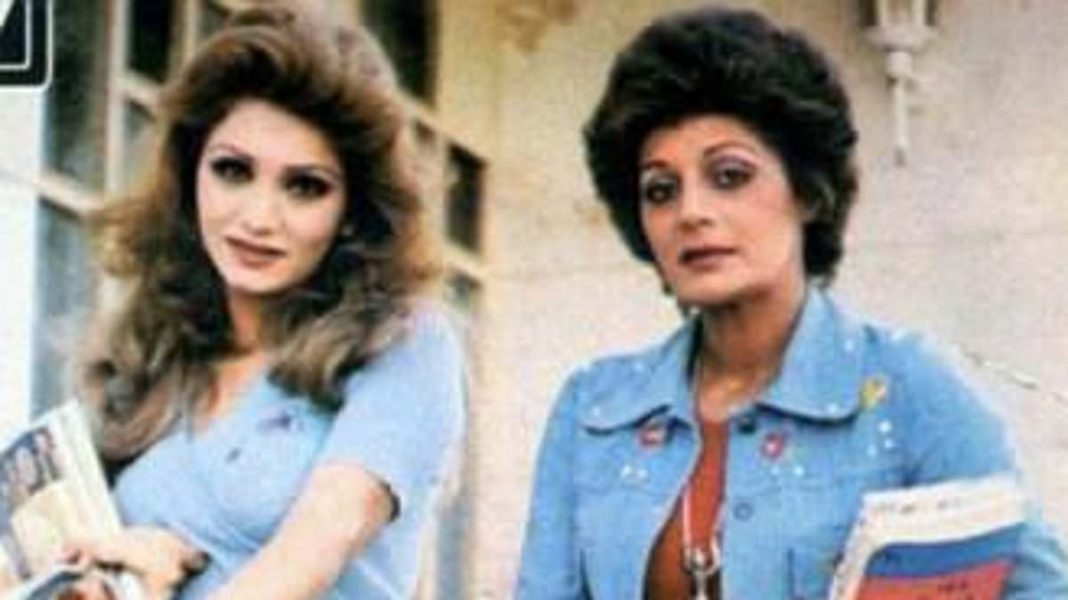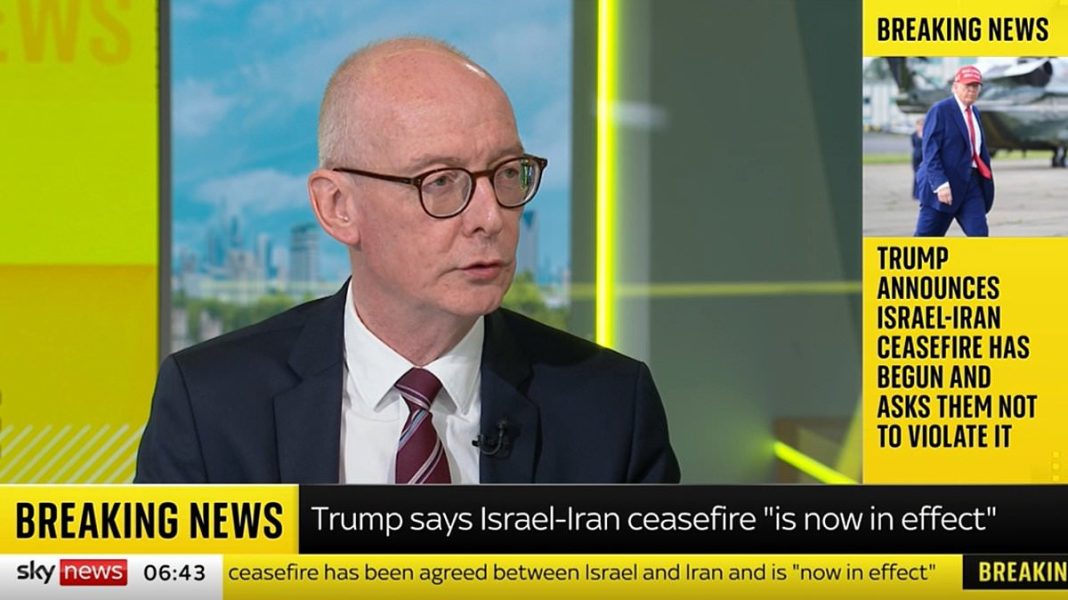They are photographs that show just how much has changed in less than 50 years.
Women wearing short skirts and figure-hugging dresses; families shopping in department stores; skiers enjoying themselves on the slopes.
This was the lighter side of life in Iran before the 1979 revolution ushered in the repressive regime that is now threatening all-out war with America after the US bombing of its nuclear facilities.
Under the rule of King Shah Mohammad Reza Pahlavi, who was an ally of Britain and the US, the hijab was even banned because it was argued it suppressed women.
In the 1960s and 1970s, many women in Iran joined the work force and mixed freely with men.
At the time, actresses who were later banned from performing posed up in short skirts for magazines, while locals were photographed skiing and wearing swimsuits and Miss Iran contestants enjoyed paddle-boat outings.
Other images from magazines show all-girl pop bands, an actress posing with her director husband, and advertisements showcasing Western fashion.
Also seen are families enjoying themselves on skiing trips in the mountains around Tehran.
Among the women pictured is Iranian actress Forouzan.
She started out doing voice-overs but eventually moved on screen. She co-starred in some of the highest-grossing Persian films of the era.
When the revolution hit in 1979, like many Iranian actresses, Forouzan was banned from playing roles in films and grew more and more isolated until her death in 2016.
Other images show director Ali Hatami and his wife, Zari Khoshkam.
He continued to make films and TV series’ after the revolution, and his daughter, Leila Hatami, is a famous actress in Iran.
The women’s rights movement in Iran blossomed after Reza Shah Pahlavi became king.
As well as banning the hijab, Pahlavi granted women the right to vote.
The Family Protection Act gave women greater rights such as allowing divorce and banning marriage under the age of 15.
Under the Shah, Iranians enjoyed the luxury of new colleges, universities and libraries.
Secondary schools were free for all and financial support was extended to university students.
The Shah also pushed the country to adopt Western-oriented secular modernization, allowing some degree of cultural freedom.
However, there was also widespread censorship in the country and the Shah repressed political dissent.
The crackdown on communists and Islamists also led to many being imprisoned and tortured.
With his liberalising reforms and harsh treatment of his political opponents, the Shah made an enemy of traditionalists in the country.
These factors, along with the Shah being perceived as a puppet of the USA and economic uncertainty, culminated in the monarchy being overthrown in 1979.
The Shah, who was suffering from cancer, fled the country and the hardline Ayatollah Ruhollah Khomeini returned from exile.
Ayatollah Khomeini, who had been living in exile in France, then returned and announced the creation of an Islamic republic.
The women’s rights movement quickly regressed.
Wearing the hijab was enforced, many of the rights they had been granted were withdrawn and the female minister of education in Iran, Farokhroo Parsa, was executed by firing squad.
Under Khomeini’s rule, Amnesty International estimated that the number of executions carried out in Iran was more than in the rest of the world combined.
One woman who was caught wearing lipstick in the northern city of Tabriz was said to have been flogged 101 times in the city’s busiest area.
In the days that followed the revolution, students who backed Khomeini stormed the US Embassy in Tehran and took 66 of its staff hostage for 444 days.
Popular anger against the US was rooted in the 1953 CIA-engineered coup that toppled Iran’s elected prime minister and cemented the power of the Shah.
After Khomeini’s death in 1989, there was no let-up in the repression of Western lifestyles.
Today, newspapers are censored, protests are aggressively suppressed and women have no legal protection against domestic violence or sexual harassment.






